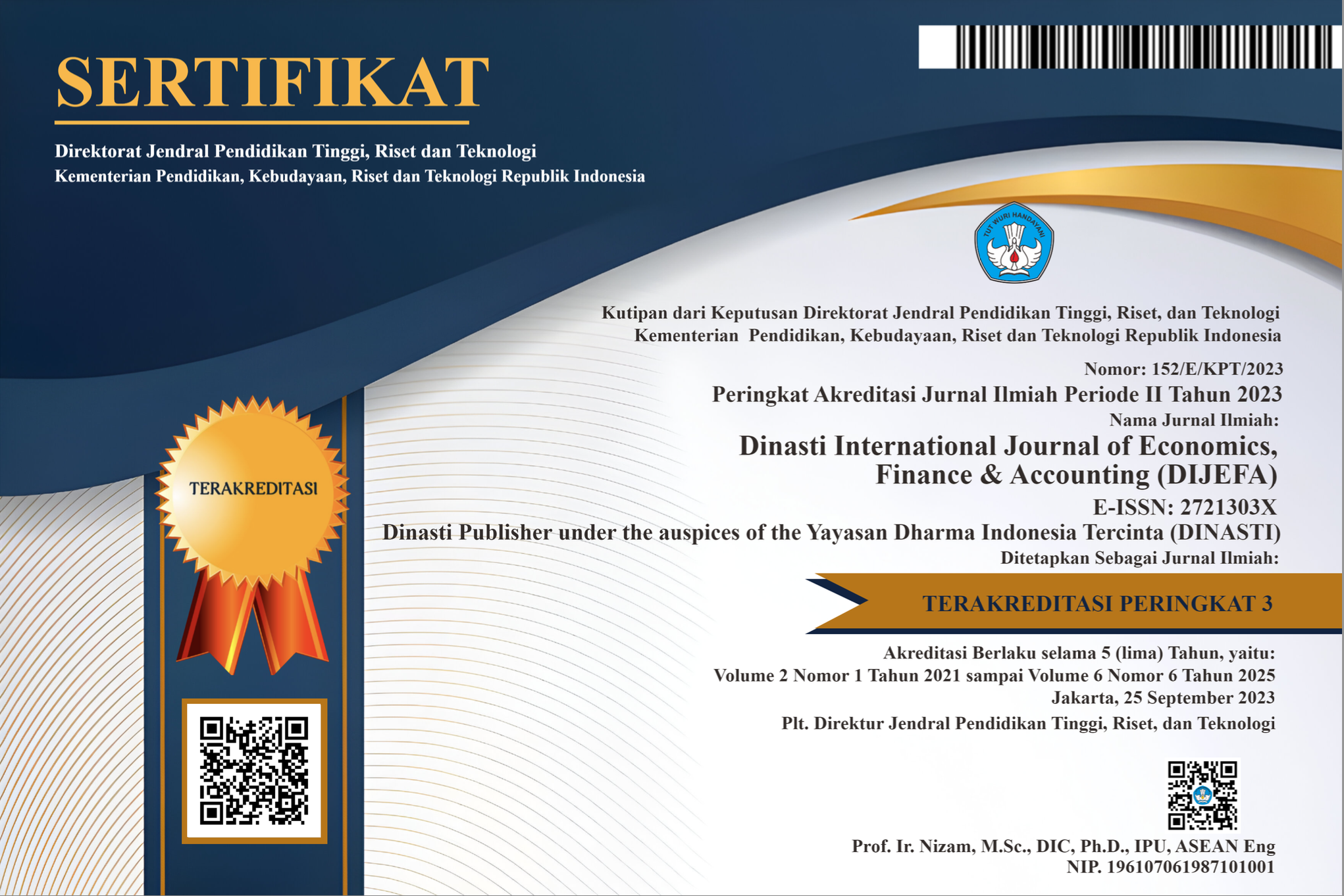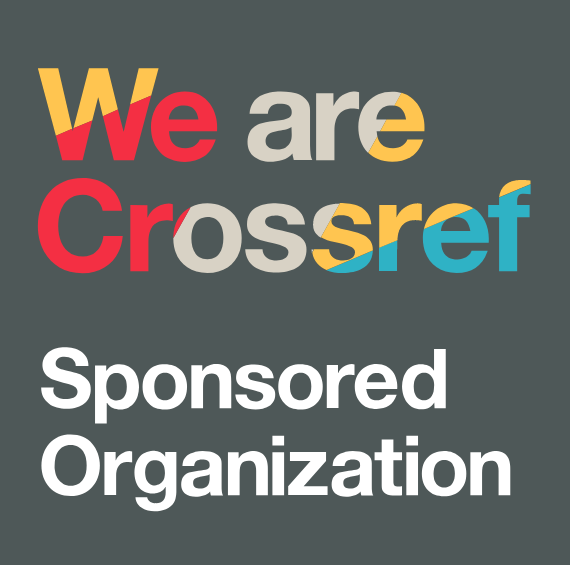HRM and Marketing: Identifying the Impacts of Rapid Technological Advancements
DOI:
https://doi.org/10.38035/dijefa.v6i1.3689Keywords:
Technological advancements, HRM, consumer services, trust, engagement, loyalty, marketing strategiesAbstract
The rapid evolution of technology has transformed various sectors, including Human Resource Management (HRM) and consumer services. This literature review, based on highly cited works in Google Scholar, investigates the significant variables influenced by the proliferation of digital applications in these fields. Key findings indicate that technological integration affects variables such as consumer trust, satisfaction, engagement, and loyalty, which are essential to both HRM and marketing strategies. The analysis also highlights the dual role of technology as both an enabler and a potential disruptor, depending on strategic implementation. This study provides a comprehensive basis for future research on leveraging technology for sustainable growth and improved management quality in HRM and marketing.
Keyword: Technological advancements, HRM, consumer services, trust, engagement, loyalty, marketing strategies.
References
Adapa, S., Fazal-e-Hasan, S. M., Makam, S. B., Azeem, M. M., & Mortimer, G. (2020). Examining the antecedents and consequences of perceived shopping value through smart retail technology. Journal of Retailing and Consumer Services, 52, 101901. https://doi.org/10.1016/j.jretconser.2019.101901
Adriatico, J. M., Cruz, A., Tiong, R. C., & Racho-Sabugo, C. R. (2022). An Analysis on the Impact of Choice Overload to Consumer Decision Paralysis. Journal of Economics, Finance and Accounting Studies, 4(1), 55–75. https://doi.org/10.32996/jefas.2022.4.1.4
Almohaimmeed, B. (2019). Pillars of customer retention: An empirical study on the influence of customer satisfaction, customer loyalty, customer profitability on customer retention. Serbian Journal of Management, 14(2), 421–435. https://doi.org/10.5937/sjm14-15517
Amoako, G. K., & Okpattah, B. K. (2018). Unleashing salesforce performance: The impacts of personal branding and technology in an emerging market. Technology in Society, 54, 20–26. https://doi.org/10.1016/j.techsoc.2018.01.013
An, M., & Han, S.-L. (2020). Effects of experiential motivation and customer engagement on customer value creation: Analysis of psychological process in the experience-based retail environment. Journal of Business Research, 120, 389–397. https://doi.org/10.1016/j.jbusres.2020.02.044
Bandura, A. (1982). Self-efficacy mechanism in human agency. American psychologist, 37(2), 122.
Blut, M., & Wang, C. (2020). Technology readiness: A meta-analysis of conceptualizations of the construct and its impact on technology usage. Journal of the Academy of Marketing Science, 48(4), 649–669. https://doi.org/10.1007/s11747-019-00680-8
Bondarouk, T., & Brewster, C. (2016). Conceptualising the future of HRM and technology research. The International Journal of Human Resource Management, 27(21), 2652-2671.
Chen, Y., Prentice, C., Weaven, S., & Hisao, A. (2022). The influence of customer trust and artificial intelligence on customer engagement and loyalty – The case of the home-sharing industry. Frontiers in Psychology, 13, 912339. https://doi.org/10.3389/fpsyg.2022.912339
Creswell, J. W. (2015). Educational research: Planning, conducting, and evaluating quantitative and qualitative research. pearson.
Dachyar, M., Yadrifil, & Manik, H. (2018). Design Success Factor Customer Relationship Management (CRM)For Rental & Sales Heavy Equipment Company. Indian Journal of Science and Technology, 11(13), 1–4. https://doi.org/10.17485/ijst/2018/v11i13/98521
De Oliveira Santini, F., Ladeira, W. J., Pinto, D. C., Herter, M. M., Sampaio, C. H., & Babin, B. J. (2020). Customer engagement in social media: A framework and meta-analysis. Journal of the Academy of Marketing Science, 48(6), 1211–1228. https://doi.org/10.1007/s11747-020-00731-5
Dogan, O., Aycin, E., & Bulut, Z. A. (2018). CUSTOMER SEGMENTATION BY USING RFM MODEL AND CLUSTERING METHODS?: A CASE. International Journal of Contemporary Economics and Administrative Sciences, 8(1), 1–19.
Dubey, R., Gunasekaran, A., Childe, S. J., Blome, C., & Papadopoulos, T. (2019). Big Data and Predictive Analytics and Manufacturing Performance: Integrating Institutional Theory, Resource-Based View and Big Data Culture. British Journal of Management, 30(2), 341–361. https://doi.org/10.1111/1467-8551.12355
Farmania, A., Elsyah, R. D., & Tuori, M. A. (2021). Transformation of CRM Activities into e-CRM: The Generating e-Loyalty and Open Innovation. Journal of Open Innovation: Technology, Market, and Complexity, 7(2), 109. https://doi.org/10.3390/joitmc7020109
Google Trends. (2023). CRM, Customer relationship management—Explore—Google Trends. Trends.Google.Com. https://trends.google.com/trends/explore?geo=ID&q=CRM,%2Fm%2F02016&hl=en-GB
Grönroos, C. (2004). The relationship marketing process: Communication, interaction, dialogue, value. Journal of Business & Industrial Marketing, 19(2), 99–113. https://doi.org/10.1108/08858620410523981
Gunawan, I. (2022). CUSTOMER LOYALTY: The Effect Customer Satisfaction, Experiential Marketing and Product Quality. 1(1).
Hanaysha, J. R., Al-Shaikh, M. E., & Kumar, P. (2022). An Examination of Customer Relationship Management and Business Sustainability in Small and Medium Enterprises: International Journal of Customer Relationship Marketing and Management, 13(1), 1–20. https://doi.org/10.4018/IJCRMM.300832
HF Solution LLC. (2023, April 19). Revolutionize Your Business with Chat GPT: 15 Use Cases for AI Implementation. | LinkedIn. https://www.linkedin.com/pulse/revolutionize-your-business-chat-gpt-15-use-cases-ai-implementation/
Hollensen, S. (2019). Marketing management: A relationship approach (Fourth edition). Pearson Benelux BV.
iterable.com. (2023). Viewing Campaign Analytics – Iterable Support Center. Iterable.Com. https://support.iterable.com/hc/en-us/articles/218203223-Viewing-Campaign-Analytics-
Keller, K. L., & Swaminathan, V. (2020). Strategic Brand Management: Building, Measuring, and Managing Brand Equity (5th ed.). Pearson.
Kim, S. H., & Lee, S. (Ally). (2017). Promoting customers’ involvement with service brands: Evidence from coffee shop customers. Journal of Services Marketing, 31(7), 733–744. https://doi.org/10.1108/JSM-03-2016-0133
Kotler, P., Kartajaya, H., & Setiawan, I. (2021). Marketing 5.0: Technology For Humanity. John Willey & Sons.
Kotler, P., & Keller, K. L. (2016). Marketing management (15 [edition]). Pearson.
Kumar, V., & Reinartz, W. (2018). Customer Relationship Management. Springer Berlin Heidelberg. https://doi.org/10.1007/978-3-662-55381-7
Kwan Soo Shin, S., Amenuvor, F. E., Basilisco, R., & Owusu-Antwi, K. (2019). Brand Trust and Brand Loyalty: A Moderation and Mediation Perspective. Current Journal of Applied Science and Technology, 1–17. https://doi.org/10.9734/cjast/2019/v38i430376
Lee, C. K. H., & Wong, A. O. M. (2021). Antecedents of consumer loyalty in ride-hailing. Transportation Research Part F: Traffic Psychology and Behaviour, 80, 14–33. https://doi.org/10.1016/j.trf.2021.03.016
Lee, Z. W. Y., Chan, T. K. H., Chong, A. Y.-L., & Thadani, D. R. (2019). Customer engagement through omnichannel retailing: The effects of channel integration quality. Industrial Marketing Management, 77, 90–101. https://doi.org/10.1016/j.indmarman.2018.12.004
Leninkumar, V. (2017). The Relationship between Customer Satisfaction and Customer Trust on Customer Loyalty. International Journal of Academic Research in Business and Social Sciences, 7(4), Pages 450-465. https://doi.org/10.6007/IJARBSS/v7-i4/2821
Li, Y., Zhao, Y., & Liu, Y. (2006). The relationship between HRM, technology innovation and performance in China. International journal of manpower, 27(7), 679-697.
Lim, W. M., Rasul, T., Kumar, S., & Ala, M. (2022). Past, present, and future of customer engagement. Journal of Business Research, 140, 439–458. https://doi.org/10.1016/j.jbusres.2021.11.014
Malhotra, N. K. (2010). Marketing Research: An Applied Orientation (6th ed.). Prentice-Hall.
Marinkovic, V., & Kalinic, Z. (2017). Antecedents of customer satisfaction in mobile commerce: Exploring the moderating effect of customization. Online Information Review, 41(2), 138–154. https://doi.org/10.1108/OIR-11-2015-0364
McKinsey & Company. (2024). The state of AI in early 2024: Gen AI Adoption Spikes and Starts to Generate Value. https://www.mckinsey.com/capabilities/quantumblack/our-insights/the-state-of-ai
Mendoza, L. E., Marius, A., Pérez, M., & Grimán, A. C. (2007). Critical success factors for a customer relationship management strategy. Information and Software Technology, 49(8), 913–945. https://doi.org/10.1016/j.infsof.2006.10.003
Monod, E., Lissillour, R., Köster, A., & Jiayin, Q. (2023). Does AI control or support? Power shifts after AI system implementation in customer relationship management. Journal of Decision Systems, 32(3), 542–565. https://doi.org/10.1080/12460125.2022.2066051
O’Neill, T. A., & Salas, E. (2018). Creating high performance teamwork in organizations. Human Resource Management Review, 28(4), 325–331. https://doi.org/10.1016/j.hrmr.2017.09.001
Prentice, C., Weaven, S., & Wong, I. A. (2020). Linking AI quality performance and customer engagement: The moderating effect of AI preference. International Journal of Hospitality Management, 90, 102629. https://doi.org/10.1016/j.ijhm.2020.102629
Rahman, M. S., Hossain, M. A., Zaman, M. H., & Mannan, M. (2020). E-Service Quality and Trust on Customer’s Patronage Intention: Moderation Effect of Adoption of Advanced Technologies: Journal of Global Information Management, 28(1), 39–55. https://doi.org/10.4018/JGIM.2020010103
Rozet, S. J., Yusriani, S., Mubarok, F., Agus, W., Sholihah, F. M., Wulandari, R., & Mirfaqoh, V. (2023, November). Efforts to Improve the Quality of Quicklime in Handling Acid Mine Drainage: A Case Study at PT. TCM. In Proceeding of The International Seminar on Business, Economics, Social Science and Technology (ISBEST) (Vol. 3, No. 1).
Ruiz-Alba, J. L., Abou-Foul, M., Nazarian, A., & Foroudi, P. (2022). Digital platforms: Customer satisfaction, eWOM and the moderating role of perceived technological innovativeness. Information Technology & People, 35(7), 2470–2499. https://doi.org/10.1108/ITP-07-2021-0572
Stone, M., Woodcock, N., Ekinci, Y., Aravopoulou, E., & Parnell, B. D. (2019). SCHEMA: Information on marketing and customer engagement performance – reality versus dreams. The Bottom Line, 32(1), 98–116. https://doi.org/10.1108/BL-02-2019-0065
Tazkarji, M. Y., & Stafford, T. (2020). Reasons for Failures of CRM Implementations. IEEE Transactions on Computational Social Systems, 7(3), 718–724. https://doi.org/10.1109/TCSS.2020.2980856
Thakur, R. (2019). The moderating role of customer engagement experiences in customer satisfaction–loyalty relationship. European Journal of Marketing, 53(7), 1278–1310. https://doi.org/10.1108/EJM-11-2017-0895
Tracy, S. J. (2024). Qualitative research methods: Collecting evidence, crafting analysis, communicating impact. John Wiley & Sons.
Yusriani, S., Patiro, S. P. S., Rekarti, E., Pamungkas, C. R., & Nurbaeti, N. (2024). Analyz?ng the Impact of Knowledge Shar?ng in V?rtual Teams: Pract?cal Ev?dence from Indones?a Open Un?vers?ty. Ilomata International Journal of Management, 5(2).
Zaridis, A. D., Soldatou, H., & Soldatou, A.-I. (2019). Entrepreneurial strategies and practices for innovation in the hospitality industry. Tourism and Travelling, 2(1), 35–44. https://doi.org/10.21511/tt.2(1).2019.05
Zheng, R., Li, Z., & Na, S. (2022). How customer engagement in the live-streaming affects purchase intention and customer acquisition, E-tailer’s perspective. Journal of Retailing and Consumer Services, 68, 103015. https://doi.org/10.1016/j.jretconser.2022.103015
Downloads
Published
How to Cite
Issue
Section
License
Copyright (c) 2025 Sri Yusriani, Nur Mustofa Kamal, Kabul Wahyu Utomo, Endi Rekarti, Shine Pintor Siolemba Patiro

This work is licensed under a Creative Commons Attribution 4.0 International License.
Authors who publish their manuscripts in this journal agree to the following conditions:
- The copyright on each article belongs to the author(s).
- The author acknowledges that the Dinasti International Journal of Economics, Finance & Accounting (DIJEFA) has the right to be the first to publish with a Creative Commons Attribution 4.0 International license (Attribution 4.0 International (CC BY 4.0).
- Authors can submit articles separately, arrange for the non-exclusive distribution of manuscripts that have been published in this journal into other versions (e.g., sent to the author's institutional repository, publication into books, etc.), by acknowledging that the manuscript has been published for the first time in the Dinasti International Journal of Economics, Finance & Accounting (DIJEFA).


























































